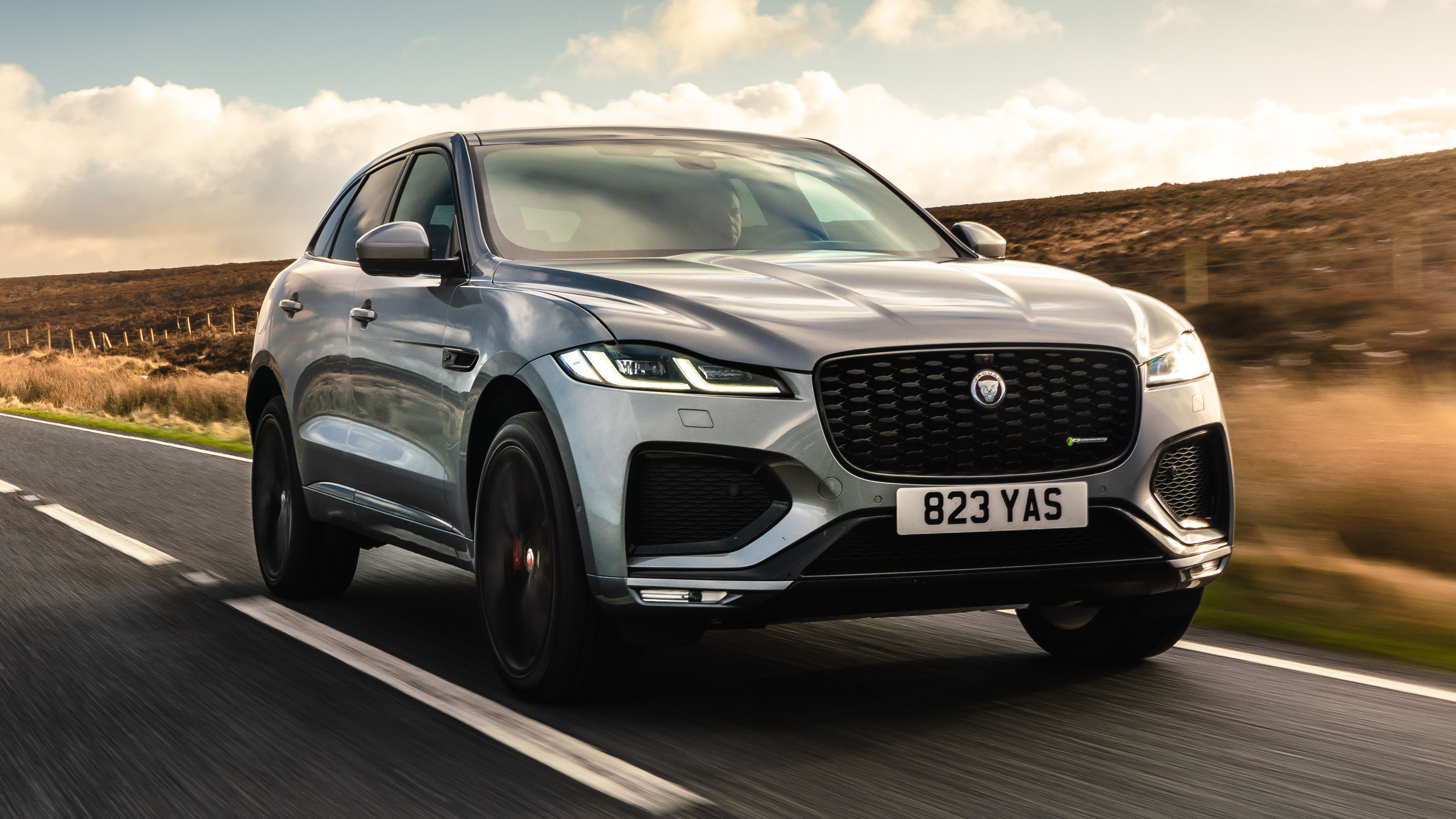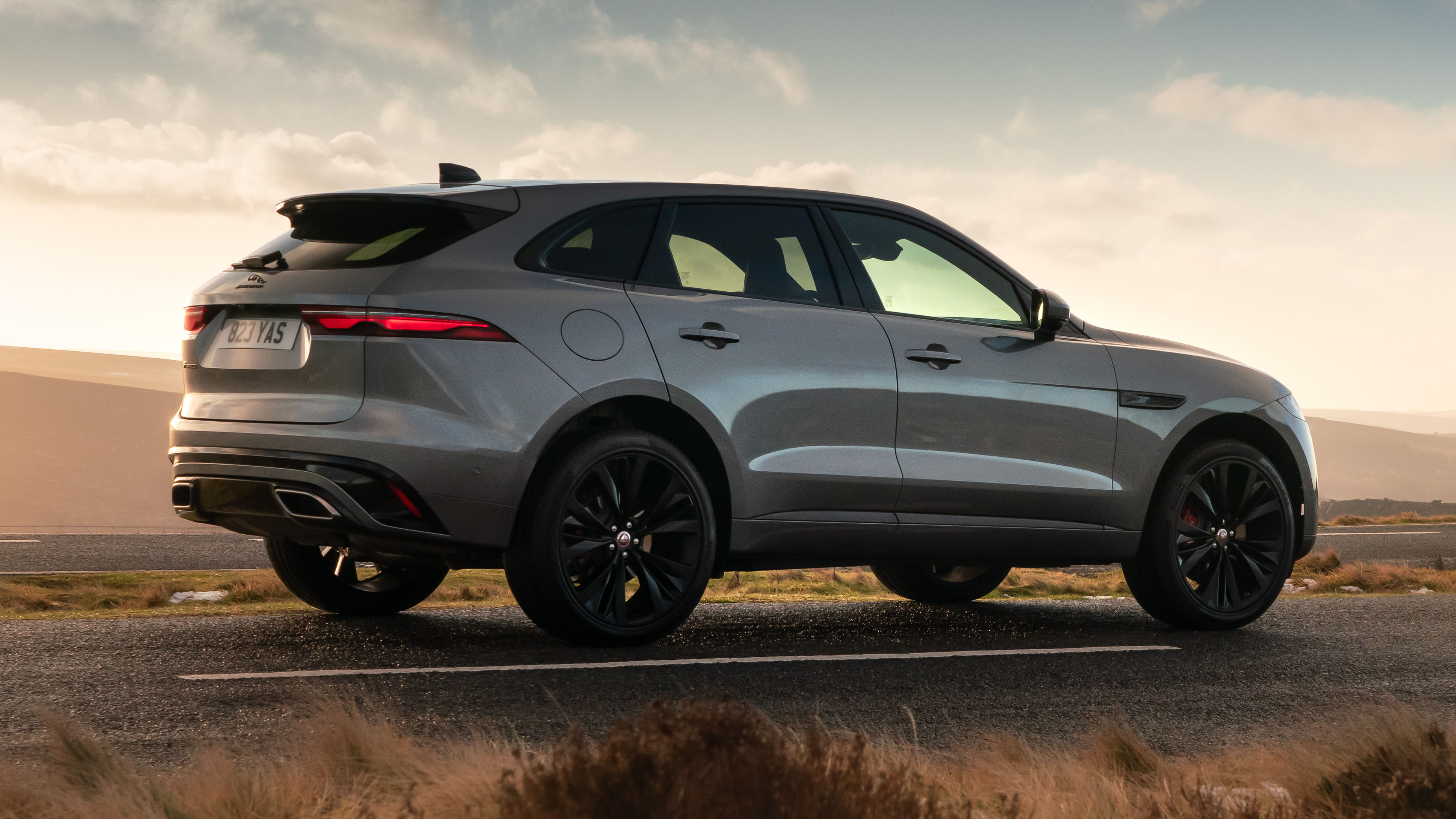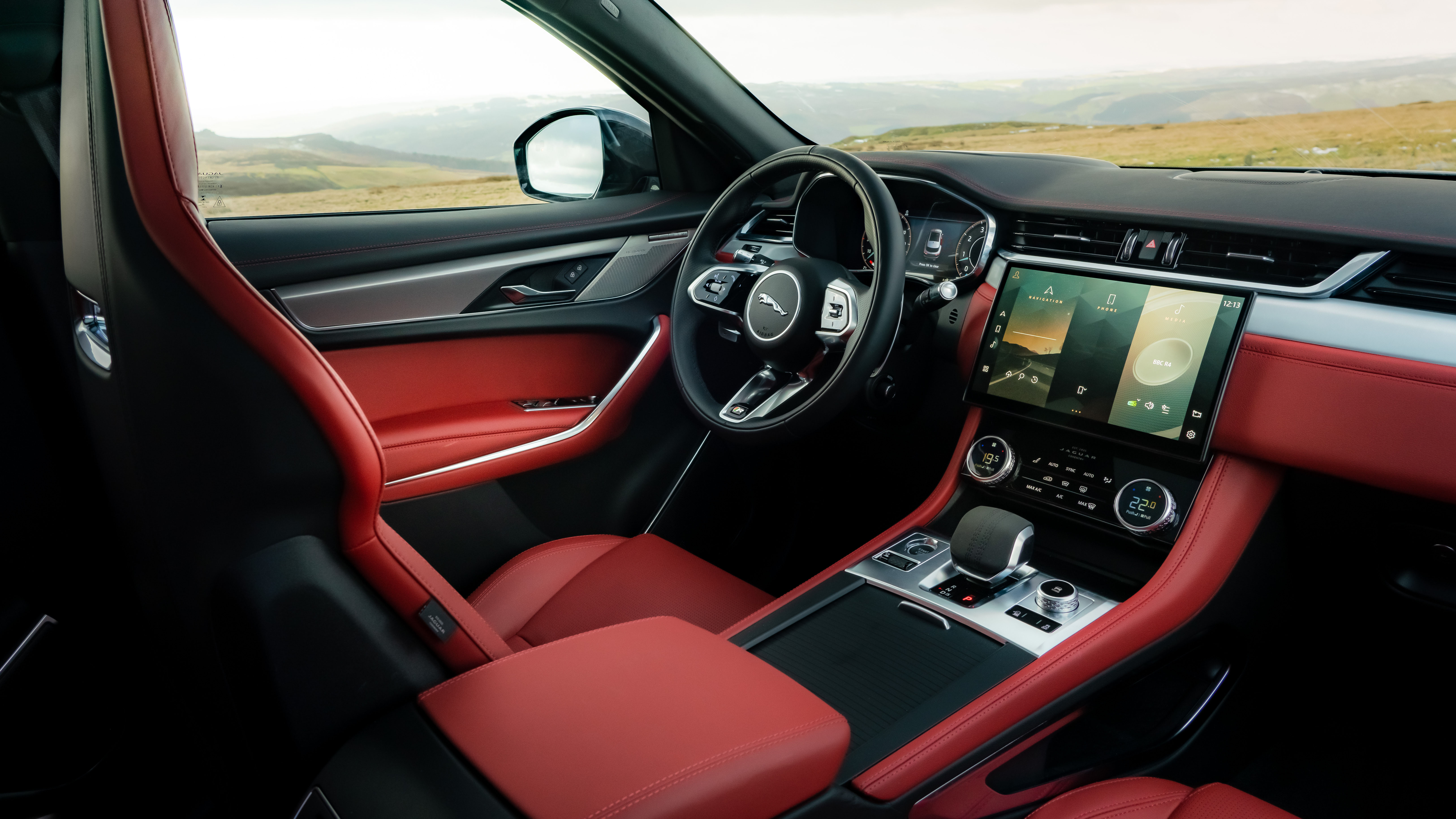
Jaguar F-Pace review
Driving
What is it like to drive?
The F-Pace has always been a slick enough thing to drive, dynamically more involving than its cousins across the way in the Land Rover wing of the JLR complex, if not quite as interactive as the Porsche Macan. There’s no getting round its lofty dimensions or sheer heft, for all that its chassis is aluminium rich.
Although we’d argue that fast iterations of big, tall and porky SUVs aren’t humanity’s finest achievement, the F-Pace is certainly one of the best-sorted examples. The suspension set-up – double wishbones upfront and a multi-link rear, with bonded anti-roll bar bushes – remains unchanged from launch, with good reason. Adaptive damping is standard on the HSE Black and 400 Sport trim levels, while the rest use a tweaked passive set-up. Handling and ride are largely exemplary.
What variants have you driven?
To date we’ve tested the 3.0-litre six-cylinder petrol and the 2.0-litre four-cylinder petrol plug-in hybrid, so we’ll start with the former. Primarily because we sure like it, with its near 400bhp and 405lb ft delivering an experience sufficiently vivid to make the continued existence of the SVR derivative moot.
It also has an intriguing specification, combining an electric supercharger with a twin scroll turbo. The former’s compressor runs off a 48V motor, so there’s boost almost immediately and more torque at lower engine speeds, while the turbo enhances driveability as you gather momentum.
The MHEV system uses a belt integrated starter generator to store otherwise lost energy in a 48V lithium-ion battery stashed under the boot floor. Redeployed, it helps smooth out the start/stop function and sharpen low-speed acceleration.
And the PHEV?
It’s… OK. As a reminder it pairs a 2.0-litre four-cylinder petrol with a 141bhp e-motor and 19.2kWh battery for up to 40 miles of e-range. It wafts about as smoothly and comfortably in electric mode as you’d expect, and when the engine does kick in it does so pretty much unnoticeably.
The e-motor effectively fills in any turbo lag, with the 0-62mph sprint seen off in 5.3 seconds on its way to a top speed of 149mph. Meanwhile a button on the centre console allows you to easily switch between full EV, hybrid and battery save driving modes, while in freezing conditions we managed around 25 miles of EV range; you’ll see more in a Merc GLC, which claims over double the range.
The biggest caveat is the extra weight: where the regular petrol and diesel versions slip in at under two tonnes, the PHEV weighs in well over. It shows, being slightly less dynamic and more fidgety on the road.
Anything else I should know?
A rotary controller beside the drive selector configures the drive modes – comfort, eco, rain-ice-snow, and dynamic – by playing with the steering, transmission and throttle calibration. We left it in Comfort most of the time, enjoying the F-Pace’s more languid qualities and the engine’s charismatic shove, rather than cornering it on its door handles. But it’ll get a serious move on if you’re in the mood.
A quick word on running costs: the entry-level diesel emits 163g/km and returns an average of 45.4mpg. The P400 delivers a combined average of 28.8mpg and emits 221g/km, while the PHEV promises fuel economy up to 176.6mpg and CO2 emissions from 37g/km.
That economy figure is eye-catching nonsense, of course, designed to help make that model a business buyer’s dream – over a 50-mile route (in minus degree temperatures) we averaged 56.3mpg. That’s not bad.
Featured

Trending this week
- Car Review
BMW iX3






